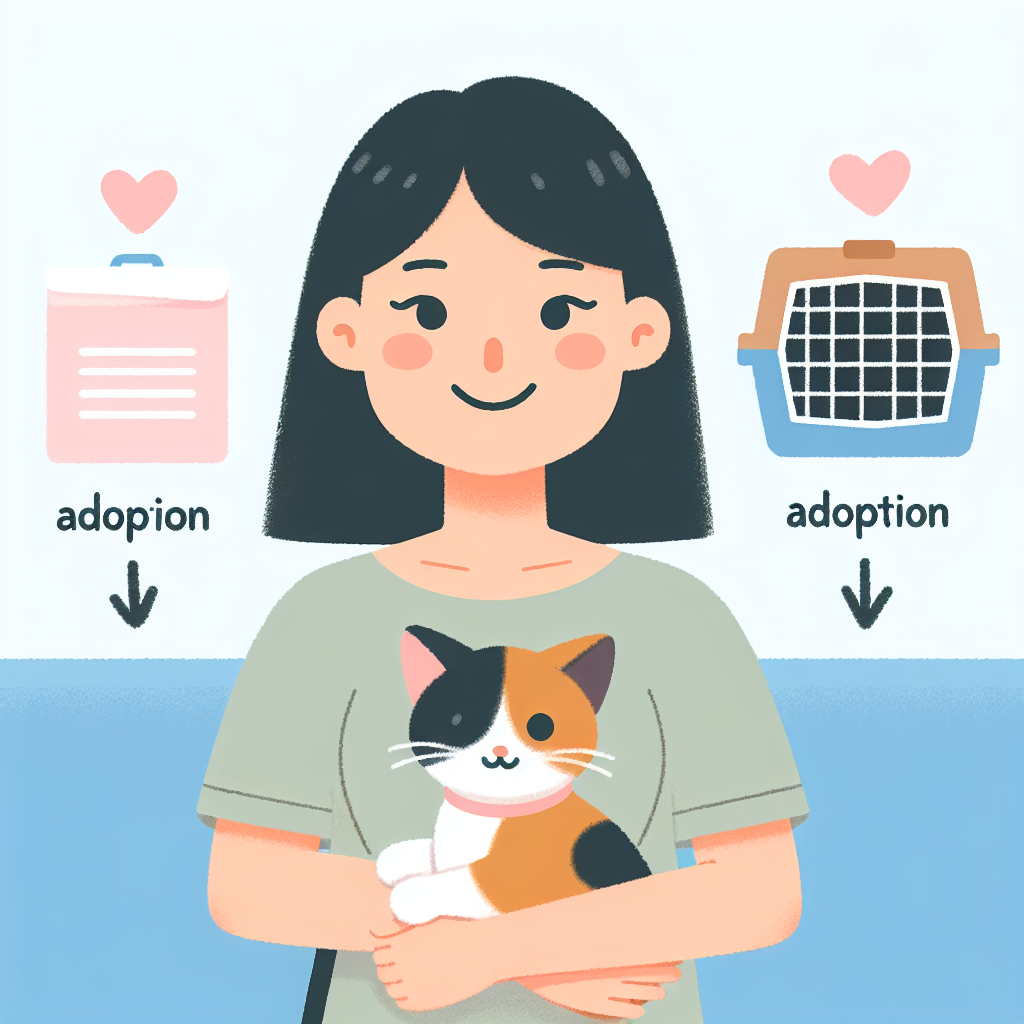
“`html
Introduction
Adopting a cat can be one of the most rewarding experiences of your life. Cats make wonderful companions and can bring joy, comfort, and a sense of fulfillment to your home. However, the adoption process can seem daunting, especially for first-time adopters. This guide aims to simplify the cat adoption process, providing you with the essential information you need to make informed decisions and ensure a smooth transition for both you and your new feline friend.
Understanding the Commitment
Before diving into the adoption process, it’s crucial to understand the commitment involved in adopting a cat. Cats can live up to 15-20 years, depending on their health and breed. This long-term commitment requires careful consideration of your lifestyle, financial stability, and readiness to care for a pet for the foreseeable future.
Time and Attention
Cats may have a reputation for being independent, but they still require time and attention from their owners. Regular playtime, grooming, feeding, and veterinary care are essential aspects of responsible pet ownership. Consider if your current lifestyle allows you the time needed to care for a cat properly.
Financial Responsibility
Owning a cat involves various costs, including food, litter, toys, regular veterinary check-ups, and unexpected medical expenses. It’s important to evaluate your financial situation to ensure you can provide for all of your cat’s needs.
Choosing the Right Cat
Once you’ve decided that you’re ready for the commitment, the next step is to choose the right cat for your home. Several factors should be considered to ensure a good match between you and your new pet.
Age
Kittens are adorable and playful, but they require more time and patience for training. Adult cats may already have established personalities, making it easier to predict their behavior. Senior cats often have a calmer demeanor and may be a great choice for a quieter household.
Breed
Different cat breeds have different temperaments and care requirements. Researching various breeds can help you understand which type of cat might be best suited to your lifestyle. For example, Siamese cats are known for being vocal and social, while Persians are typically more laid-back.
Temperament
When adopting, consider the cat’s temperament and how it aligns with your household. A shy or skittish cat might not be the best choice for a home with young children, while an active and playful cat may thrive in a bustling environment.
Where to Adopt
There are several avenues through which you can adopt a cat, each with its own advantages.
Animal Shelters
Animal shelters are a great place to start your search. They house a variety of cats, from kittens to seniors, and often have knowledgeable staff who can help match you with the right cat. Adoption fees at shelters generally cover vaccinations, spaying/neutering, and initial veterinary check-ups.
Rescue Groups
Rescue groups often focus on specific breeds or types of cats and may have more detailed information about the cat’s history and temperament. They may also offer foster-to-adopt programs, allowing you to ensure a good fit before finalizing the adoption.
Online Adoption Platforms
Websites like Petfinder and Adopt-a-Pet allow you to search for cats available for adoption in your area. These platforms provide photos and detailed descriptions, making it easier to find a cat that meets your criteria.
The Adoption Process
The adoption process can vary depending on the organization, but most follow a similar structure.
Application
You’ll begin by filling out an adoption application. This form typically includes questions about your living situation, experience with pets, and what you’re looking for in a cat. The goal is to ensure that you and the cat are a good match.
Interview
Some organizations require a brief interview, either in person or over the phone. This conversation allows the adoption coordinators to ask follow-up questions and ensure you’ve thought through the responsibility of adopting a cat.
Home Visit
A home visit may be conducted to ensure your living environment is safe and suitable for a cat. This step is more common with rescue groups than with shelters.
Meet and Greet
You’ll have the opportunity to spend time with the cat, observing its behavior and determining if it’s a good fit for your family. Take this time to ask any questions you have about the cat’s health, behavior, and care needs.
Adoption Fee
An adoption fee is generally required, which helps cover the cost of the cat’s care prior to adoption. This fee often includes spaying or neutering, vaccinations, and a microchip.
Preparing Your Home
Before bringing your new cat home, it’s important to prepare your living space to ensure a smooth transition.
Essential Supplies
Gather all necessary supplies, including food and water bowls, a litter box, litter, a scratching post, toys, and a comfortable bed. Having these items ready will help your cat feel more at home.
Safe Space
Create a safe and quiet space for your cat to retreat to, especially during the first few days. This could be a separate room or a cozy corner where your cat can adjust to their new surroundings at their own pace.
Cat-Proofing
Ensure your home is cat-proofed by securing loose wires, removing toxic plants, and storing chemicals safely. Cats are curious creatures, and taking these precautions can prevent accidents.
Bringing Your Cat Home
The day you bring your new cat home is exciting but can be overwhelming for the cat. Here are some tips to ease the transition:
Transporting Your Cat
Use a secure carrier to transport your cat from the adoption center to your home. A familiar scent, like a blanket from the shelter, can provide comfort during the journey.
Introducing Your Cat to Its New Environment
Allow your cat to explore its new environment at its own pace. Keep the house quiet and minimize visitors during the first few days to reduce stress.
Introducing Your Cat to Other Pets
If you have other pets, introduce them gradually and under supervision. Keep initial interactions short and positive, rewarding good behavior with treats and praise.
Post-Adoption Care
Once your cat is settled in, ongoing care and attention are crucial to ensuring a happy and healthy life.
Veterinary Check-Ups
Schedule a veterinary check-up soon after adoption to establish a health baseline and discuss a vaccination and wellness plan.
Nutrition
Provide a balanced diet appropriate for your cat’s age and health needs. Consult your veterinarian for recommendations on the best food options.
Socialization and Enrichment
Engage your cat with regular playtime and mental stimulation. Toys, puzzle feeders, and interactive play can prevent boredom and encourage healthy behaviors.
Conclusion
Adopting a cat is a significant commitment, but with the right preparation and understanding, it can be a fulfilling and life-enriching experience. By following this simplified guide to the cat adoption process, you’ll be well-equipped to provide a loving and nurturing home for your new feline companion. Remember, patience and love are key to building a strong bond with your cat, ensuring many happy years together.
“`






